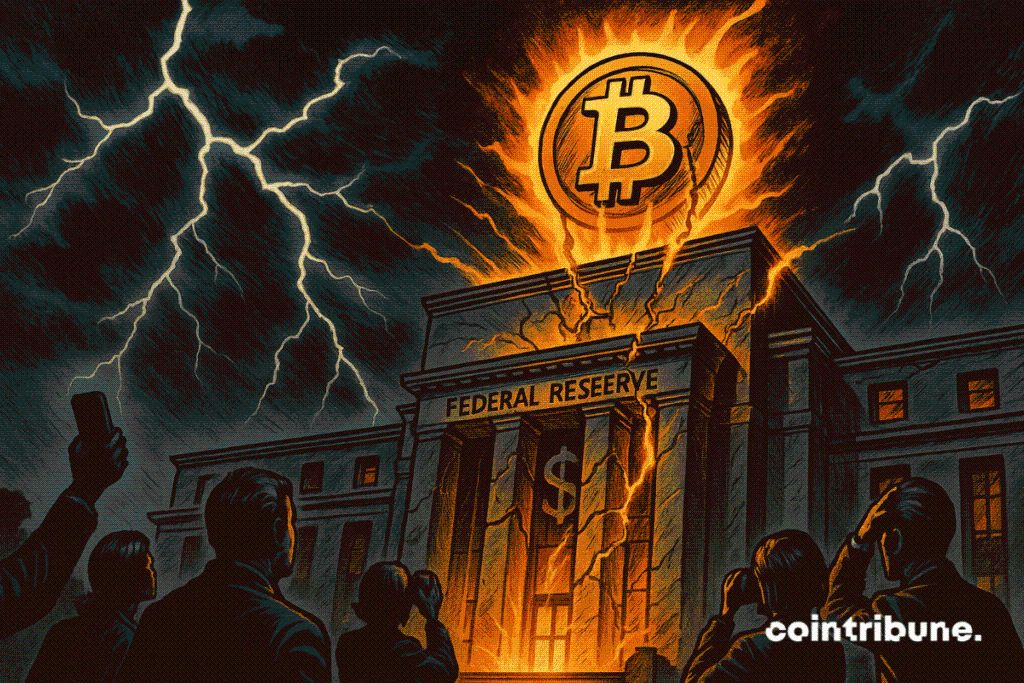Market Euphoria At Risk If Fed Holds Rates
Markets are almost unanimously betting on a rate cut on October 29. However, a much quieter scenario is starting to worry : that of a Fed status quo. In a context of incomplete economic data and persistent uncertainties about growth, the hypothesis of strategic immobility is gaining ground. What if this scenario, still largely underestimated, triggered the most violent market reaction?

In Brief
- Markets confidently anticipate a 25 basis point cut in the benchmark rates at the Fed meeting scheduled for October 29.
- This anticipation is based on slowing inflation, a moderation in the labor market, and the absence of complete data due to the U.S. government shutdown.
- A minority but credible scenario suggests that the Fed will keep rates unchanged, following a cautious approach amid economic uncertainties.
- An unexpected decision could cause a sharp market correction, especially in the crypto ecosystem, which is highly sensitive to rate movements.
Markets Are Betting on Monetary Easing
For several weeks, markets have acted as if a 25 basis point rate cut by the Federal Reserve at the FOMC meeting on October 29 was already a done deal.
The majority of traders anticipate a cut, convinced that slowing inflation and employment tensions justify easing. This confidence has translated into a notable rise in major stock indices and a rally in the crypto market, with Bitcoin notably surpassing 125,000.
The central argument put forward by investors relies on a favorable reading of several recent macroeconomic indicators. However, this dynamic rests on fragile foundations due to several factors :
- Inflation has shown signs of slowing, reinforcing the idea that the Fed’s restrictive cycle is coming to an end ;
- The labor market shows signs of moderation, with a relative decline in job creation in certain key sectors ;
- The federal government shutdown complicates access to reliable macroeconomic data, making analysis more uncertain than it appears ;
- Financial markets seem to have already priced in the rate cut, making any potential divergence all the more risky.
In other words, the current consensus is not based solely on tangible facts but also, and perhaps more importantly, on a very optimistic reading of a largely opaque economic environment.
What if the Fed Decided to Hold Off ?
In a climate where the expectation of a monetary pivot seems almost unanimous, some analysts are beginning to worry about an alternative scenario that could surprise markets: that the Fed might choose not to cut rates on October 29.
Such a scenario would constitute a shock, certainly, but it cannot be ruled out : it would reflect a Fed strategy aimed at preserving its monetary maneuvering room for 2026, in anticipation of a potentially more severe recession. This hypothesis, still a minority view, is gaining credibility as uncertainties surrounding the growth trajectory intensify.
Contrary to the current enthusiasm, this scenario is based on a logic of monetary prudence. Facing incomplete economic data due to the shutdown, the Fed might consider a rate cut decision premature without a full macroeconomic picture.
It could also fear fueling new speculative bubbles in risky markets, particularly cryptocurrencies, which several analysts already view as significantly overvalued.
An unexpected status quo could trigger immediate selling in stocks and cryptos, with Bitcoin likely to lose several thousand dollars within hours. Altcoins, being more volatile, could see double-digit losses.
Ultimately, this sequence could mark a turning point in how markets read and interpret monetary policy signals amid shutdown-related uncertainty . The present case reveals a strong dependence on dominant narratives, but also the fragility of a system where confidence relies on a homogeneous reading of sometimes missing data. An unpredictable Fed on October 29 would not only shake markets but would also test the reflexes and resilience of a crypto ecosystem still largely conditioned by the decisions of the U.S. central bank.